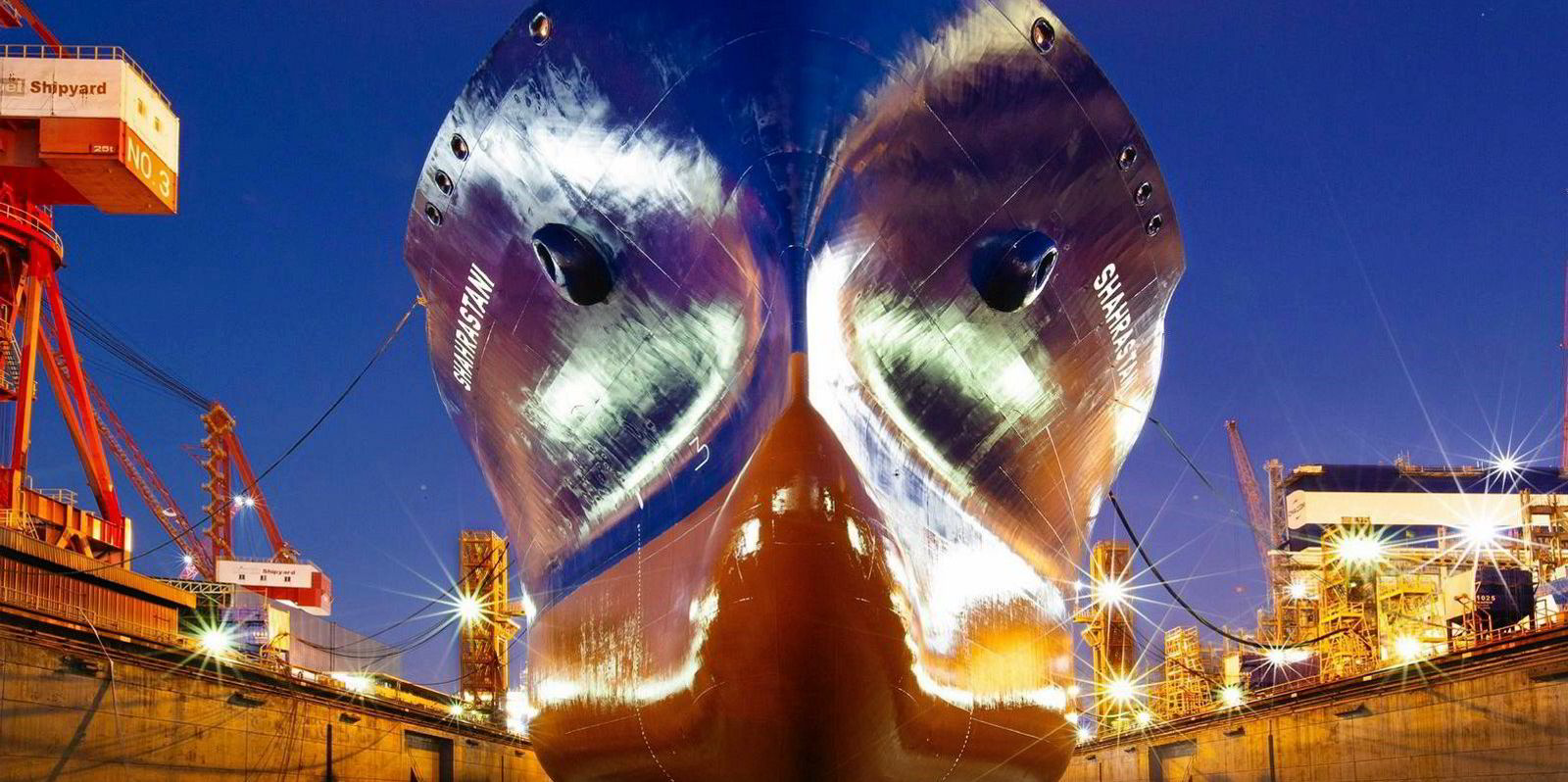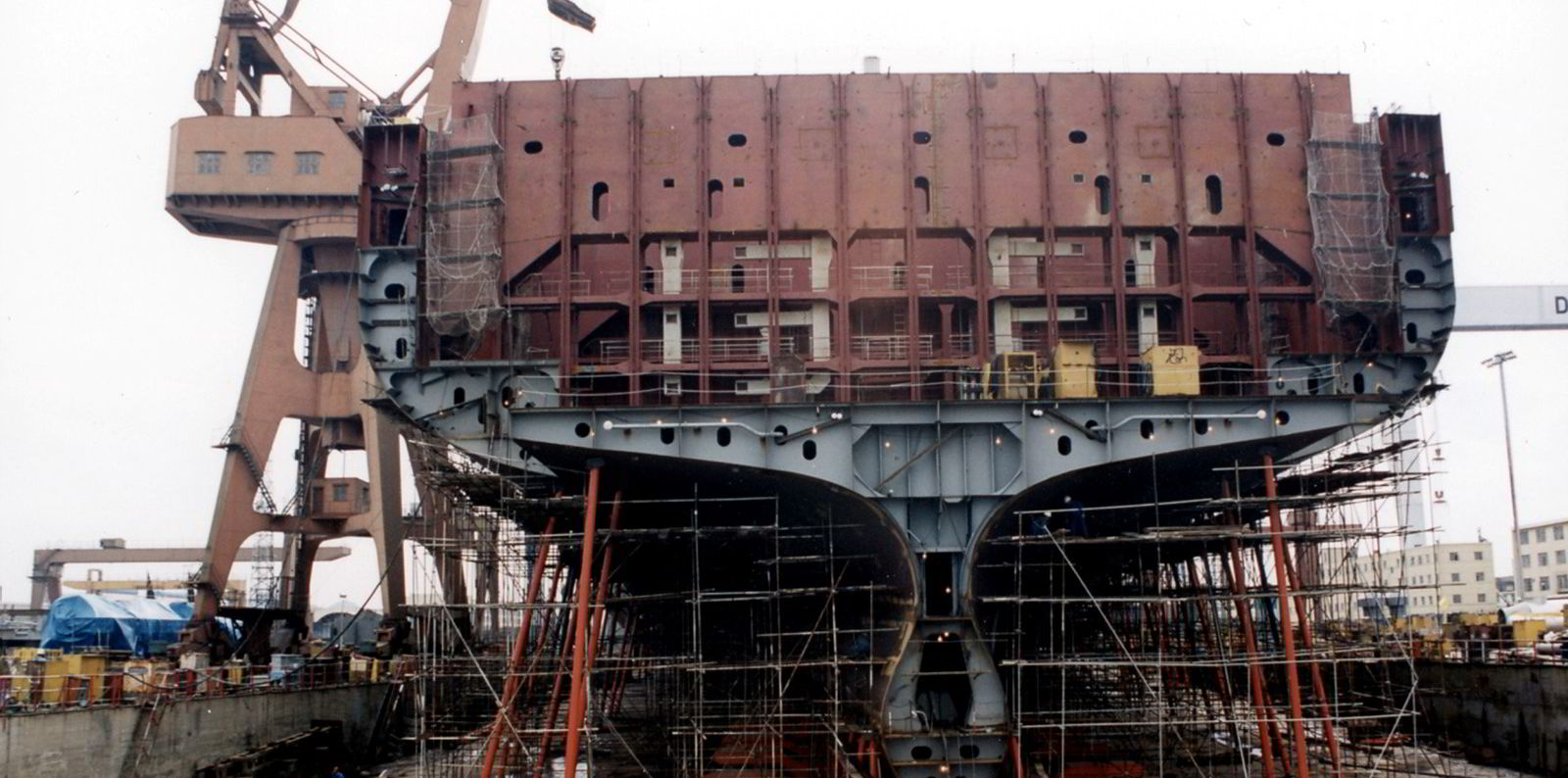The tanker market had to wait until the second month of 2022 to see its first newbuilding order, according to a top shipbroker.
Recent reports suggested the tanker in question was a 50,000-dwt product carrier ordered at GSI Nansha in southern China by Mitsui OSK Line.
“Never in history has there been less ordering activity during the first two months of the year,” said Affinity (Shipping).
“Over the last seven months, only 25 tankers in total have been ordered, of which only six were crude oil tankers.”
The Richard Fulford-Smith-led broker said the current tanker orderbook totals just 353 vessels, the fewest since November 2012.
In deadweight terms, the tanker orderbook is at its lowest level since October 2013 at only 44.16m dwt. The deadweight on order equates to 7.1% of the fleet — its lowest level since December 1993.
Affinity said a further 217 vessels are due for delivery this year, in addition to the 36 delivered so far; only 112 are scheduled for 2023; and 21 are for 2024.
Never in history has there been less ordering activity during the first two months of the year
Affinity (Shipping)
“Newbuilding prices remain at multi-year highs, as yards remain under absolutely no pressure to soften them in the wake of still-solid containership and LNG carrier ordering. Yard capacity is now largely filled through to 2025,” the shipbroker said.
A comparable situation is occurring in the dry bulk space, with just one bulker, an ultramax, ordered in February.
Affinity said the last time only one vessel or none were ordered in a calendar month was in April 2017.
“It marks a significant decrease from recent months; in January, 12 vessels were ordered, itself the fewest in a month since August 2020. Just one year ago, in February 2021, 45 vessels were ordered,” it said.
The dry bulk orderbook stands at 701 vessels, the fewest since the 688 in November 2020, before the freight market rebounded.
Affinity said that except for October and November 2020, it is the lowest number of vessels on order since December 2003, and a long way short of the 3,000-vessel peak in 2011.
In deadweight terms, the dry bulk orderbook is the lowest it has been since December 2003, at 63.27m dwt.
Although there has been a significant slowdown in the pace at which container ships are being ordered, there is still a steady level, according to the shipbroker.
In February, 26 vessels were ordered, the most in a calendar month since September 2021; 183,128 teu was ordered, which fell short of January’s 189,303 teu.
Last month, the focus was on the 2,000 to 4,000-teu range, with 14 vessels ordered. Four ships in the 5,100 to 8,000-teu range were also ordered, as were two of 11,000 to 14,000-teu and six of 14,000 to 16,000 teu.
“The containership orderbook has now swelled to 385 vessels, totalling 6.2m teu. Both values are at the highest they have ever been, surpassing even the glut of 2008,” the broker said.
“As a percentage of the fleet, the orderbook in teu terms has risen to 25.3%, but this still falls well short of the levels seen back in 2008, when it rose to as high as 55%. It is the highest, though, since early 2011.”





